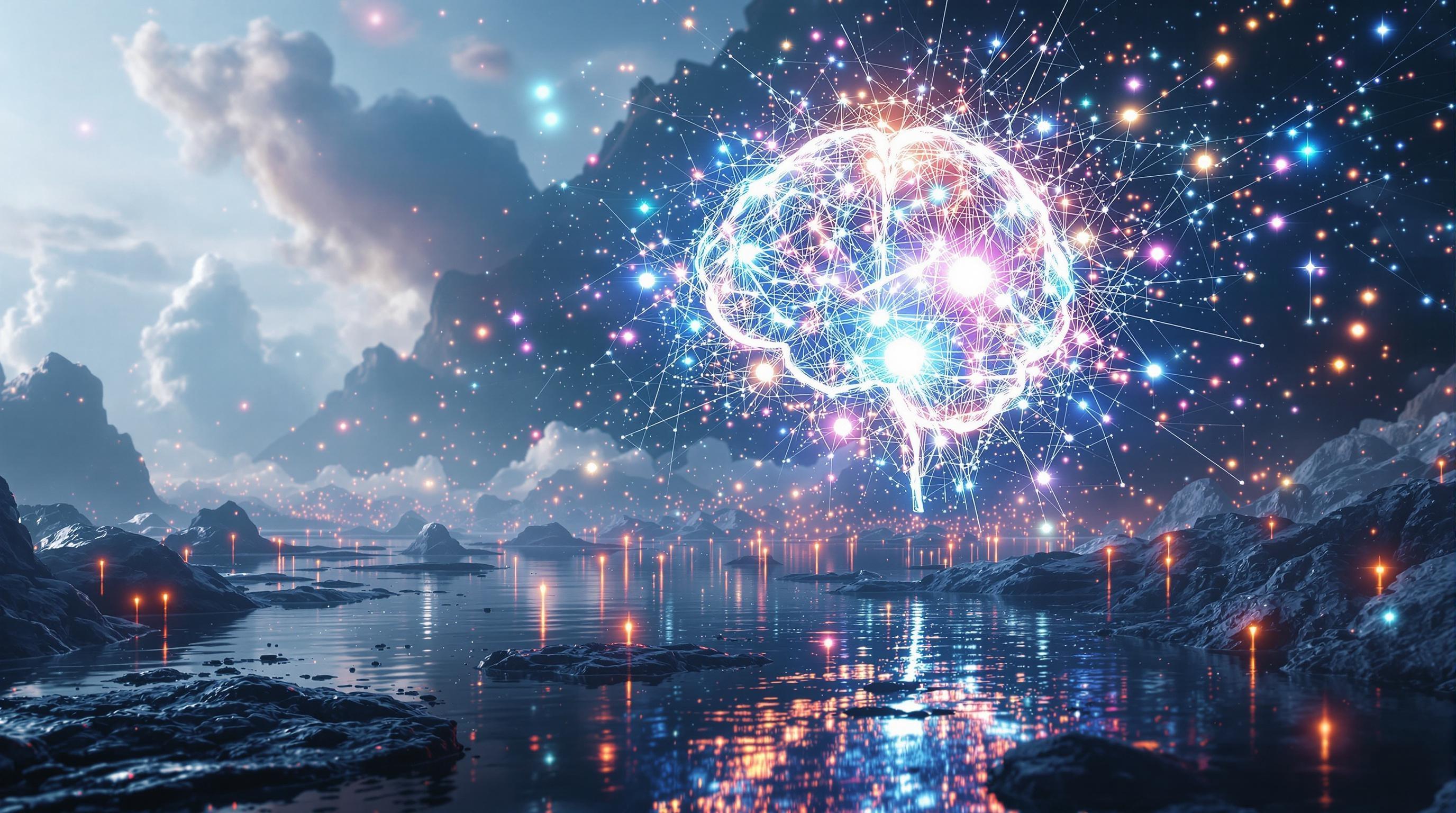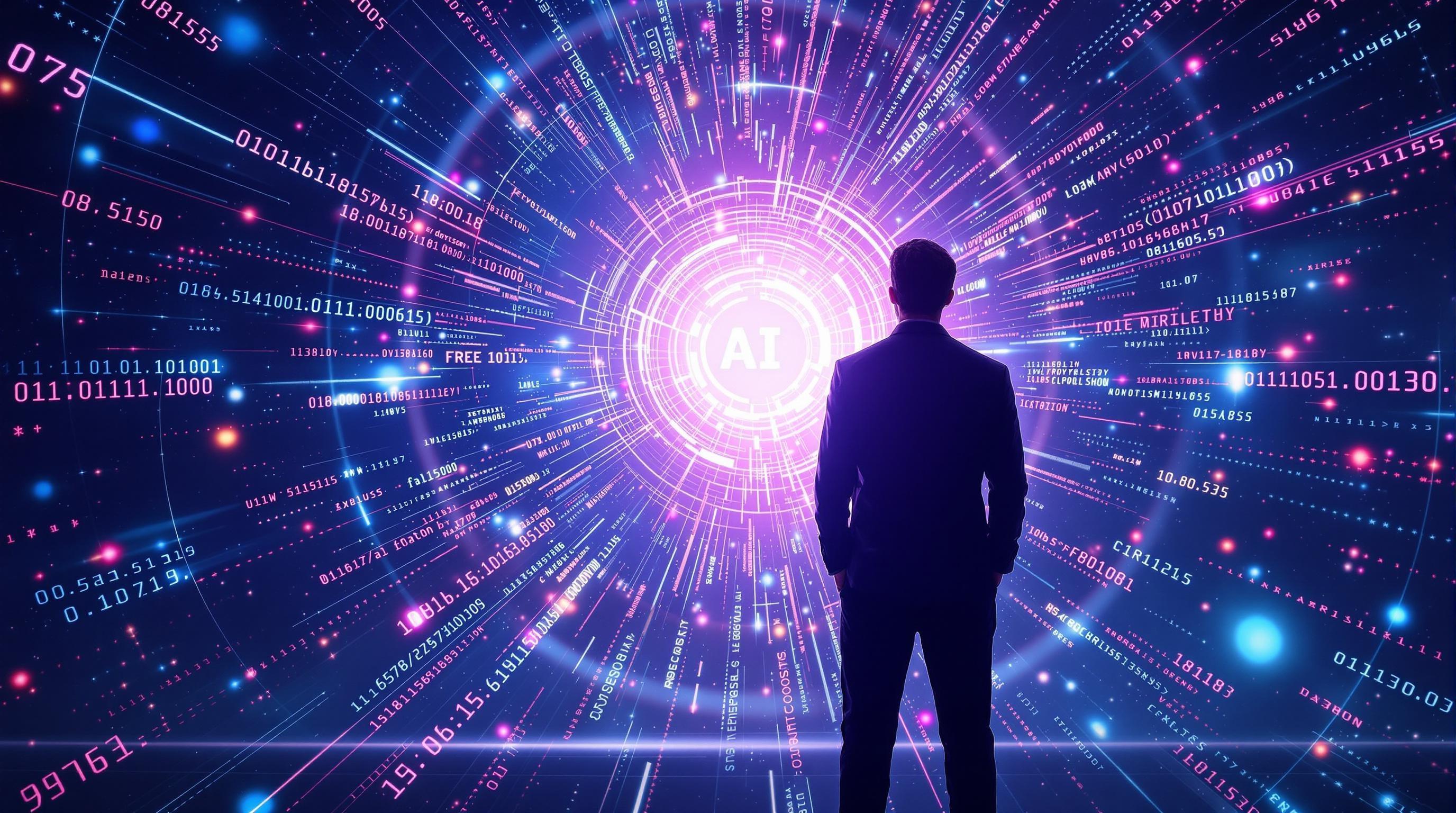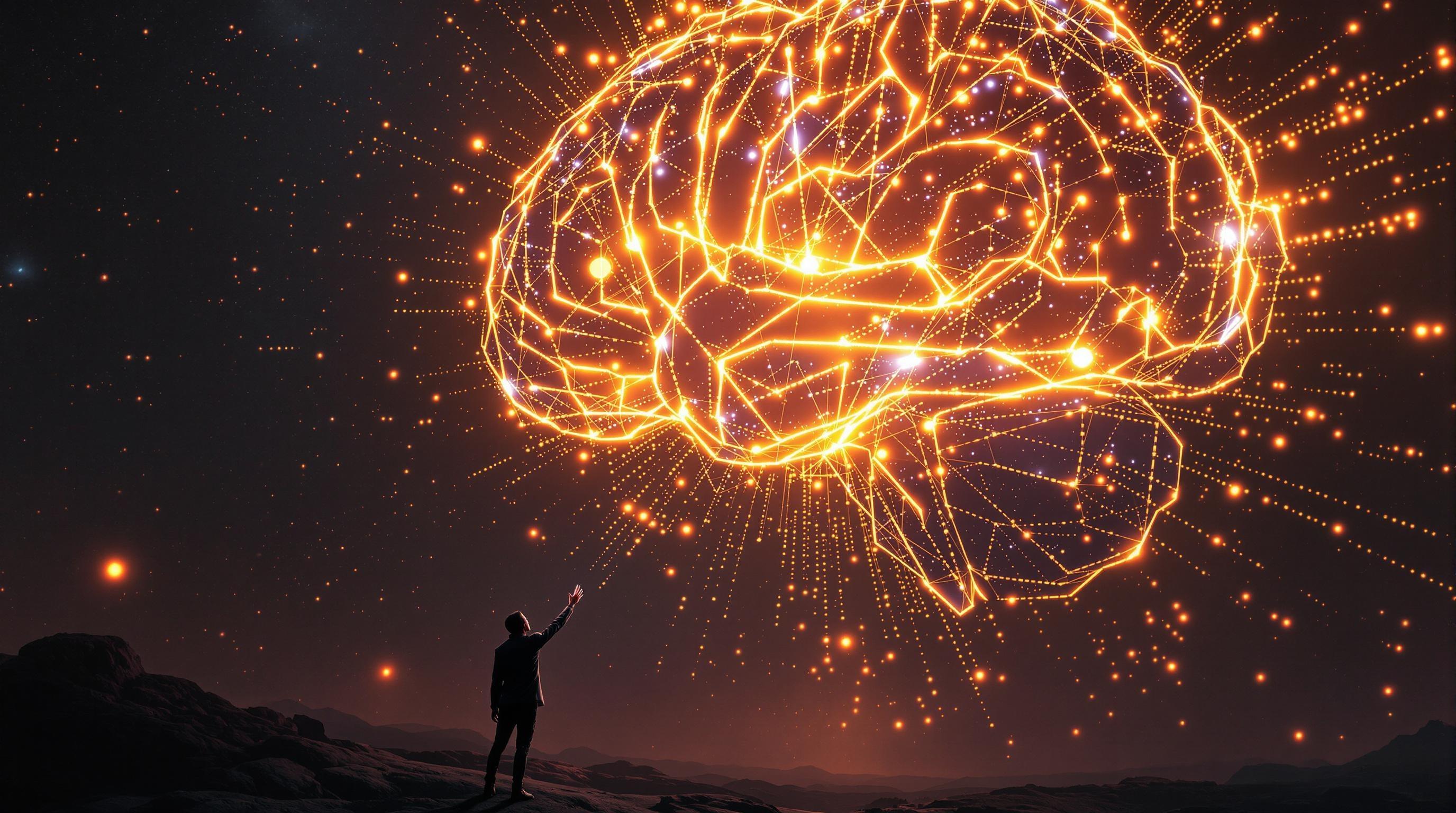Genie 3: Google DeepMind's AI Breakthrough Could Revolutionize Gaming and Beyond

Google DeepMind's Genie 3 is revolutionizing interactive environment creation, offering unprecedented potential for gaming, education, and industry. By understanding physics and retaining object coherence, Genie 3 empowers developers to create dynamic, responsive worlds, significantly reducing development time and costs. Explore Genie 3 to unlock AI's creative potential and build immersive, interactive experiences.
Google DeepMind's Genie 3: A Glimpse into the Future of AI and Gaming
Imagine a world where creating interactive, playable environments is as simple as describing them. That's the promise of Genie 3, an AI research prototype from Google DeepMind that's turning heads and sparking imaginations.
Initial Impressions: A Former Googler's Perspective
One of the most compelling early glimpses into Genie 3 comes from a former Google researcher, who recently shared their hands-on experience. Their initial reaction? "Mind-blowing." Having seen countless AI projects come and go, this researcher was particularly struck by Genie 3's ability to generate interactive worlds from simple prompts. It's not just about creating pretty pictures; it's about building functional, playable environments with surprising depth and responsiveness.
The implications are vast. Imagine indie game developers capable of prototyping entire game worlds in days instead of months, or educators crafting interactive learning experiences tailored to individual students. The potential is truly transformative.
Mind-Blowing Capabilities and Industry Impact
Genie 3's capabilities extend far beyond just gaming. Its potential impact ripples across numerous industries:
Gaming: Revolutionizing game development by drastically reducing development time and costs, enabling rapid prototyping and iteration, and empowering indie developers to create richer, more immersive experiences. Consider tools like Sora, which is making waves in video generation, but Genie 3 focuses on interactive environments.
Education: Creating personalized learning environments where students can explore historical events, scientific concepts, or fictional worlds in an interactive and engaging way. Imagine learning about ancient Rome by actually walking through a virtual Roman city.
Virtual Reality (VR) and Augmented Reality (AR): Powering the creation of more realistic and immersive VR/AR experiences, allowing users to interact with virtual objects and environments in a natural and intuitive way.
Simulation and Training: Developing realistic simulations for training professionals in various fields, such as medicine, engineering, and emergency response. Imagine surgeons practicing complex procedures in a risk-free virtual environment.
Genie 3 represents a significant leap forward in AI's ability to understand and generate complex, interactive environments. As AI continues to evolve, tools like Google Gemini and DeepSeek are constantly pushing the boundaries of what's possible. The transformative potential of AI in gaming and beyond is only just beginning to be explored, and the future looks incredibly bright.

Where Genie 3 Shines: General Purpose AI for Gaming and Beyond
Imagine being able to create interactive experiences from just a single image or a short video – that's the promise of Genie 3. This isn't just another incremental improvement in AI; it's a potential paradigm shift.
Genie 3's Versatility and Speed
Genie 3 is designed as a general-purpose generative model, meaning it's not narrowly focused on a single task. This is a significant departure from many existing AI models that excel in specific domains but struggle to adapt to new situations. What truly sets Genie 3 apart is its ability to generate interactive environments from a wide range of inputs, including images, videos, and even sketches. This flexibility makes it a powerful tool for creators across various fields.
Another critical advantage is its fast startup time. Unlike some AI models that require extensive training on specific datasets before they can be used effectively, Genie 3 can start generating interactive environments almost immediately. This is crucial for applications where rapid prototyping and iteration are essential, such as game development or industrial design. Think of it as the difference between waiting hours for a 3D model to render versus seeing a preliminary version in seconds – it accelerates the creative process dramatically.
Excelling in Gaming and Adapting to Reality
Genie 3's performance in gaming environments is nothing short of remarkable. It can take a simple 2D image of a game world and generate a fully interactive 3D environment, complete with physics, character controls, and even basic AI. This opens up exciting possibilities for indie game developers, modders, and anyone else who wants to create engaging gaming experiences without the need for extensive coding or 3D modeling skills.
But perhaps the most impressive aspect of Genie 3 is its ability to generalize to real-world scenarios. While it excels at creating game environments, it's not limited to them. It can also generate interactive simulations of real-world environments, such as factories, warehouses, or even city streets. This is where its potential for industrial applications becomes truly apparent. If you're looking for other AI tools that can help you develop games, check out AI Studios for creating interactive environments.
Industrial Applications: A New Frontier
The ability to create interactive simulations of industrial environments has profound implications for various sectors. Imagine being able to use Genie 3 to:
Design and optimize factory layouts: By simply providing a few images or videos of an existing factory, Genie 3 could generate a virtual model that allows engineers to experiment with different layouts, workflows, and equipment placements. This could lead to significant improvements in efficiency, safety, and productivity.
Train workers in hazardous environments: Instead of putting workers at risk in real-world simulations, Genie 3 could create safe and realistic virtual training environments. This is particularly valuable for industries such as mining, construction, and oil and gas, where accidents can have devastating consequences.
Develop and test new products: Genie 3 could be used to create virtual prototypes of new products, allowing engineers to test their designs and identify potential problems before they are even built. This could significantly reduce development time and costs.
Optimize logistical operations: By simulating warehouse environments, companies could identify bottlenecks and optimize routes for workers and automated systems, leading to more efficient and cost-effective supply chains.
Genie 3 represents a significant step towards creating AI that is not just intelligent but also adaptable and versatile. Its general-purpose nature, quick startup time, and ability to generalize to real-world scenarios make it a potentially transformative technology with applications far beyond gaming.
As AI continues to evolve, models like Genie 3 will likely become increasingly common, blurring the lines between the virtual and real worlds and unlocking new possibilities for creativity, innovation, and problem-solving. But how does Genie 3 stack up against the current landscape of AI tools? Let's delve into a comparison with other leading AI models to understand its unique strengths and potential limitations.

AI Learns Physics: Genie 3's Breakthrough in Understanding the Physical World
Imagine an AI that doesn't just react to the world, but understands its underlying rules, like gravity and momentum. That's the leap Google DeepMind is taking with Genie 3.
Genie 3: Learning the Language of Physics
Genie 3's breakthrough lies in its ability to learn physics, a feat that separates it from many other AI models that primarily focus on pattern recognition. This includes understanding how objects interact within a game engine and even grasping non-rigid physics, which governs the movement of flexible objects like cloth or water. This is a significant step beyond AI simply mimicking actions; it's about understanding why those actions occur.
Think of it like teaching a child to play with building blocks. Instead of just showing them how to stack the blocks, you explain the concepts of balance and gravity. Genie 3, in essence, is learning those fundamental principles.
Game Engine Physics: This involves understanding how simulated worlds operate. For example, an AI might learn that jumping in a game causes a character to move upwards and then downwards due to simulated gravity. Genie 3 can predict these movements and interactions.
Non-Rigid Physics: This is more complex, dealing with how deformable objects behave. Imagine a flag waving in the wind or a character's clothing flowing as they move. Genie 3 can learn to model these complex interactions, creating more realistic and dynamic simulations.
From Pixels to Principles: Learning Without an Engine
What makes Genie 3 particularly remarkable is its potential to learn these physics principles without relying on an underlying physics engine. Traditionally, AI models that simulate physics require a pre-built engine to provide the rules and parameters. Genie 3, however, can potentially learn directly from training data, such as videos of real-world events or gameplay footage. It is conceivable that Genie 3 can also learn from existing game engines by using their output as training data, allowing it to internalize their rules and behaviors.
This ability to learn without a predefined engine opens up exciting possibilities for creating AI that can understand and interact with the physical world in a more intuitive and adaptable way.
Implications for Game Development and Simulation
The implications of Genie 3's physics learning for game development and simulation are profound.
More Realistic Games: By understanding physics, AI can create game worlds that feel more believable and immersive. Characters will move more naturally, objects will interact realistically, and the overall experience will be significantly enhanced. Consider the implications for vehicle simulations or sports games, where accurate physics are paramount.
Automated Content Creation: Imagine AI that can automatically generate realistic animations, create dynamic environments, or even design entire game levels based on a fundamental understanding of physics. This could drastically reduce development time and costs.
Advanced Simulations: Beyond gaming, Genie 3 could revolutionize fields like robotics and engineering. AI models could simulate complex physical systems, predict the behavior of robots in real-world environments, or even design new materials with specific physical properties.
In essence, Genie 3's ability to learn physics is not just a technical achievement; it's a gateway to a new era of AI-powered simulation and game development. This deeper understanding of the world will allow AI to create more realistic, dynamic, and engaging experiences across a wide range of applications. As AI continues to evolve, understanding the fundamental principles of the physical world will be crucial for unlocking its full potential, as seen in other tools listed in the Top 100.

Transforming Game Creation: Genie 3's Impact on Artists and Designers
Imagine a world where game creation is as intuitive as dreaming. Google DeepMind's Genie 3 edges us closer to that reality, promising to revolutionize how artists and designers approach the gaming landscape.
Genie 3: A Stylized World Alchemist
Genie 3 truly shines when generating stylized environments that lend themselves beautifully to games. It doesn't just create static backdrops; it weaves in believable character interactions, adding a layer of depth previously reserved for painstakingly crafted scenes. This capability opens doors for:
Rapid Prototyping: Concept artists can quickly visualize their ideas in interactive environments, drastically shortening the concept-to-prototype pipeline.
Dynamic Level Design: Level designers can iterate on level layouts with AI assistance, generating variations and testing scenarios faster than ever before.
Enhanced Storytelling: Game developers can integrate richer environmental storytelling, allowing the world itself to become a character.
This focus on stylized environments and character interaction positions Genie 3 as a powerful tool for crafting visually compelling and engaging gaming experiences. Think of it as a digital set designer and choreographer rolled into one, breathing life into virtual worlds with remarkable speed and efficiency.
Empowering Artists and Designers
What does this mean for the creative professionals at the heart of game development? Genie 3 isn't about replacing artists; it's about augmenting their abilities and freeing them from tedious tasks. Here’s how it can specifically impact different roles:
Concept Artists: Imagine sketching a rough character design and then using Genie 3 to instantly see that character interacting with a variety of environments. This eliminates the need for extensive manual rendering in the initial concept phase, allowing artists to focus on the core creative vision.
Level Designers: Instead of painstakingly building every detail of a level from scratch, designers can use Genie 3 to generate a base environment based on a simple prompt. They can then refine and customize this AI-generated world, adding their unique artistic touch and gameplay elements. This accelerates the level design process and allows for more experimentation.
Game Developers: By streamlining the asset creation process, Genie 3 can help developers bring their games to market faster and more efficiently. This allows for more resources to be dedicated to gameplay mechanics, narrative depth, and overall polish.
Think of Genie 3 as a powerful AI assistant, handling the groundwork so artists can focus on what they do best: creating compelling and immersive experiences.
Immersive and Interactive Gaming Experiences
The ultimate goal of any game developer is to create an experience that truly captivates players. Genie 3 contributes significantly to this by enabling the creation of more immersive and interactive game worlds. Consider these possibilities:
With Genie 3, developers can focus on creating dynamic, responsive environments that react to player actions, making the game world feel truly alive.
Reactive Environments: Imagine a forest that sways realistically in the wind or a city that reflects the changing weather. Genie 3 can help create these dynamic environments that respond believably to in-game events.
Non-Player Character (NPC) Interactions: The ability to generate believable character interactions opens the door for more engaging NPC encounters. Imagine NPCs that react dynamically to player choices and actions, creating a more immersive and personalized gaming experience.
Procedural Storytelling: Genie 3 can assist in generating dynamic storylines and quests based on player choices and actions. This allows for more replayability and a sense of agency for the player.
In essence, Genie 3 has the potential to transform games from passive experiences into dynamic, living worlds, where players feel truly immersed and engaged. As we see the rise of AI tools like Sora, which generates realistic and imaginative scenes from text instructions, the possibilities become even more exciting.
Genie 3 empowers artists and designers, paving the way for the next generation of gaming experiences. It will be interesting to see how the power of tools like Deepmind AlphaFold will play a role in the future of AI and gaming. As AI continues to evolve, its impact on the creative process will only deepen, ushering in an era of unprecedented innovation and artistry. But what are the potential downsides? Let's explore the ethical considerations and challenges that arise with such powerful AI tools.

Beyond Video: Creating Immersive Experiences with AI-Powered Visuals
Imagine stepping into a video game where the graphics are so realistic, you forget you're not actually there – that's the promise of AI-powered immersive experiences.
High Engagement Potential: More Than Just Watching
While video models like Sora are captivating in their ability to generate realistic scenes, AI-powered visuals have the potential to offer something far more engaging: interactivity. Instead of passively watching a pre-rendered scene, users can actively explore and shape their environment. This shift from passive viewing to active participation dramatically increases engagement. Think of it like the difference between watching a cooking show and actually cooking the recipe yourself – the latter is far more likely to leave a lasting impression.
The Key to High-Retention Consumer Experiences
The ability to create deeply engaging experiences translates directly to higher retention for consumer applications. Imagine an e-commerce platform where you can virtually "walk through" a store, examining products from every angle and even trying them out in a simulated environment. Or consider educational software that allows students to explore ancient Rome as if they were actually there. These types of immersive experiences are far more likely to hold a user's attention and encourage repeat visits compared to traditional 2D interfaces. This also makes them much more memorable and impactful.
Enhanced Learning: Imagine interactive history lessons where students can explore ancient civilizations firsthand.
Immersive Shopping: Picture virtual storefronts where customers can examine products in detail and try them out in simulated environments.
Personalized Entertainment: Envision games and interactive stories that adapt to the user's choices and actions, creating truly unique experiences.
Photorealistic Walkthroughs and Drone Shots: Seeing is Believing
One of the most compelling applications of AI-powered visuals is the creation of photorealistic walkthroughs and drone shots. Imagine being able to explore a property listing as if you were physically walking through the house, or surveying a construction site from a bird's-eye view without ever leaving your office. Tools like Leonardo AI, an AI image generation tool excelling in creating game assets and photorealistic images, could be instrumental in creating these immersive environments. The level of detail and realism achievable with AI can provide a far more accurate and compelling representation than traditional photography or video.
Global Illumination and Lighting Advancements: Setting the Mood
Beyond just creating realistic visuals, AI is also revolutionizing the way we simulate lighting. Global illumination, the process of simulating how light bounces and interacts with different surfaces, is crucial for creating a truly immersive and believable environment. AI algorithms can now accurately simulate these complex lighting effects in real-time, adding a level of depth and realism that was previously impossible to achieve. Think about the way light filters through a forest canopy or reflects off a still lake – these subtle details can have a profound impact on the overall atmosphere of a scene. With the help of AI, it becomes possible to re-create these effects with stunning accuracy, creating a truly immersive visual experience.
The combination of high engagement, photorealistic visuals, and advanced lighting techniques creates a powerful recipe for immersive experiences that can transform the way we interact with technology.
The ability of AI to craft immersive experiences extends far beyond video games; its potential impact on fields like education, e-commerce, and virtual tourism could be revolutionary.

Unlocking AI Visual Memory: Genie 3's Ability to Retain Object Coherence
Imagine an AI that doesn't just see, but remembers what it sees, retaining a consistent understanding of objects even when they disappear from view. This is the promise of Genie 3's groundbreaking visual memory capabilities.
The Power of Visual Memory
Genie 3's most impressive feat is its ability to maintain object coherence across extended timeframes. In simpler terms, it remembers what things are and how they relate to each other, even when they're not directly visible. Think of it like this: if you see a ball rolling behind a box, you still know the ball exists and will likely emerge on the other side. Previous AI models often struggled with this type of reasoning, frequently losing track of objects or changing their properties when they were occluded (hidden from view).
Genie 3, however, demonstrates a remarkable ability to:
Maintain object identity: A ball remains a ball, even when it's partially or fully hidden.
Preserve object properties: The color, size, and shape of the ball remain consistent.
Track object relationships: The AI understands that the ball is behind the box and will likely continue its trajectory.
This isn't just about recognizing individual objects; it's about understanding the entire scene and how things interact within it. This nuanced understanding is crucial for creating truly immersive and believable virtual environments, and it's a significant leap beyond what previous AI models could achieve. The approximate consistency that Genie 3 displays, especially with objects under occlusion or across long stretches of simulated time, marks a substantial advancement.
Improved Scene Understanding and Representation
This improved visual memory directly translates to a more complete and accurate scene understanding. Genie 3 doesn't just see a collection of pixels; it interprets the scene as a collection of objects with defined properties and relationships. This richer representation allows the AI to:
Generate more realistic and consistent environments: Because it remembers the objects and their properties, the generated scenes are less likely to contain jarring inconsistencies or illogical elements.
Enable more complex interactions: The AI can reason about how objects will behave over time, allowing for more sophisticated and dynamic gameplay.
Facilitate more natural human-AI interaction: By understanding the scene in a way that aligns more closely with human perception, Genie 3 can respond to user commands and queries more effectively.
The ability to retain object coherence is not merely a cosmetic improvement; it's a fundamental step towards creating AI that can truly understand and interact with the world in a meaningful way.
Consider the implications for a game like Grand Theft Auto. Current AI models might struggle to maintain the identity of a specific car as it weaves through traffic, potentially causing it to change color or even disappear entirely. Genie 3, with its enhanced visual memory, could track that car consistently, leading to a more believable and immersive experience.
Ultimately, Genie 3's ability to retain object coherence and improve scene understanding is a game-changer. This breakthrough not only enhances the realism and immersion of AI-generated content, but also paves the way for more intelligent and intuitive AI systems that can truly understand the world around them. Now, let's delve deeper into how this technological leap impacts the realm of game development.

Open Problems: Addressing the Challenges in AI Physics, Interaction, and Logic
Even with its impressive capabilities, Genie isn't without its hurdles. Several open problems need addressing before AI can truly master interactive environments.
Physics: The Unpredictable World
One of the most significant challenges lies in accurately simulating complex physics. Imagine a tower of blocks. A slight nudge in the real world can send it tumbling in a cascade of precisely calculated movements. Replicating this level of fidelity in AI is incredibly difficult. Current models often struggle with:
Realistic collisions: Predicting how objects will interact upon impact remains a computationally intensive and nuanced task.
Stable structures: Ensuring that virtual structures behave believably under stress and gravity is crucial for immersive experiences.
Fluid dynamics: Simulating water, smoke, and other fluids adds another layer of complexity, requiring advanced algorithms and significant processing power.
Think of it like trying to teach a computer to predict the path of a billiard ball, not just on a flat table, but in a room full of obstacles and with constantly shifting gravity. Current AI can handle simple scenarios, but the real world is far messier.
Social Dynamics: More Than Just Code
Beyond individual actions, AI struggles with social and multi-agent interactions. This is particularly evident in combat games, where understanding and reacting to the behavior of multiple opponents simultaneously is key. Issues include:
Coordination: Getting AI agents to cooperate effectively as a team is a major challenge. They often act independently, undermining strategic goals.
Prediction: Anticipating the moves of human or AI opponents requires sophisticated pattern recognition and strategic thinking.
Adaptation: Adjusting tactics in response to changing circumstances and opponent behavior is a crucial aspect of intelligent interaction.
This is like trying to program a virtual soccer team where each player understands not only their own role but also anticipates the passes, blocks, and strategic shifts of their teammates and opponents. It requires a level of nuanced understanding that goes beyond simple coding.
Logic and Instruction Following: Bridging the Gap
Another area needing improvement is instruction following and combinatorial game logic. Humans excel at understanding and executing complex instructions, but AI often falters, especially when dealing with ambiguous or multifaceted tasks. This is apparent in:
Ambiguity: Interpreting vague or open-ended instructions is difficult for AI, which typically requires precise input.
Context: Understanding the context surrounding an instruction is vital for proper execution, but AI often struggles with this.
Planning: Devising a sequence of actions to achieve a specific goal requires strategic planning and problem-solving skills that are still under development in AI.
Imagine trying to explain the rules of chess to an AI. While it can learn the individual moves, grasping the overarching strategies and adapting to unexpected situations remains a significant hurdle.
Restricted Action Space: Limited Options
Many AI systems operate within a restricted action space, meaning they can only perform a limited set of predefined actions. This can stifle creativity and adaptability. Think of it like giving an artist only a few colors to paint with – the possibilities are inherently limited. Expanding the action space allows for more complex and nuanced interactions.
AI Limitations
Even with advancements, AI still has inherent limitations:
Computational Resources: Training and running complex AI models requires significant computational power, which can be a barrier to entry for many developers.
Data Dependency: AI models are only as good as the data they are trained on. Biased or incomplete data can lead to flawed or unreliable results.
Explainability: Understanding why an AI model makes a particular decision is often difficult, which can hinder trust and adoption.
Addressing these open problems is crucial for unlocking the full potential of AI in interactive environments. As AI continues to evolve, expect to see breakthroughs in physics simulation, social interaction, and logical reasoning, paving the way for truly immersive and engaging experiences. You can follow developments in AI News to stay informed.

The Future of AI in Gaming: Disruption, Innovation, and AAA Games
Imagine a world where game developers can build entire interactive worlds from just a few prompts. That future is closer than you think.
A Five-Year Forecast: Gaming's AI Disruption
The next five years promise a seismic shift in the gaming industry, driven by the rapid advancement and integration of AI. We're not just talking about smarter NPCs (non-player characters) or procedural content generation; we're on the cusp of AI fundamentally altering how games are designed, developed, and experienced. Expect to see:
Accelerated Development Cycles: AI tools will automate many tedious tasks, allowing smaller teams to achieve AAA-quality results in a fraction of the time. Imagine using AI to generate entire levels, populate them with diverse characters, and even write dialogue – all from a simple text prompt. This is the promise of tools like Sora, an AI model capable of creating realistic and imaginative scenes from text instructions, influencing not just video but other forms of media.
Hyper-Personalized Gaming Experiences: AI will enable games to adapt dynamically to individual player styles and preferences. Games will learn from your decisions, adjust the difficulty on the fly, and even tailor the narrative to your specific interests. Forget pre-scripted storylines; the future is about emergent narratives shaped by your actions.
AI-Driven Game Design: AI can analyze vast amounts of player data to identify optimal game mechanics, level designs, and reward systems. This data-driven approach will lead to more engaging and addictive games, optimized for maximum player satisfaction.
Democratization of Game Development: AI will lower the barrier to entry for aspiring game developers. With AI-powered tools, anyone with a creative vision will be able to bring their game ideas to life, regardless of their technical skills. This could lead to a surge of innovative indie games pushing the boundaries of the medium.
The Convergence: 3D AI, LLMs, and AAA Games
The real magic happens when we combine Genie with other cutting-edge AI technologies, especially Large Language Models (LLMs) and advancements in 3D AI. LLMs, like ChatGPT, a versatile language model known for its ability to generate human-quality text and engage in conversations, can be used to create more realistic and engaging in-game dialogue, generate dynamic quests, and even personalize the player experience. Imagine an NPC that remembers your past interactions and responds accordingly, offering unique insights and challenges based on your character's history.
3D AI, on the other hand, focuses on enabling AI agents to understand and interact with the 3D world. This is crucial for creating believable and autonomous characters that can navigate complex environments, react to changes in the world, and even collaborate with other AI agents. Think of it as giving NPCs a sense of agency and awareness, making them feel more alive and less like simple programs.
This convergence of technologies will be particularly transformative for AAA game development. AAA games, known for their high production values and massive scale, often require hundreds of developers and millions of dollars to create. AI can significantly reduce the cost and time required to develop these games, while also enabling new levels of complexity and player immersion.
Future Prospects: Pushing the Boundaries
The future of AI in gaming extends far beyond simple automation and procedural content generation. We're moving towards a world where AI becomes an integral part of the creative process, collaborating with human developers to create truly innovative and groundbreaking games. Some potential future advancements include:
AI-Powered World Building: Imagine using AI to generate entire planets, complete with diverse ecosystems, unique cultures, and compelling histories. Players could explore these worlds endlessly, discovering new secrets and challenges around every corner.
AI-Driven Storytelling: AI could be used to create dynamic and branching narratives that adapt to the player's choices in real-time. The story would be different for every player, creating a truly unique and personalized gaming experience.
AI as a Game Master: Imagine an AI that acts as a dynamic Game Master, adjusting the game's rules, challenges, and rewards based on the player's performance and preferences. This would create a constantly evolving and challenging gaming experience, perfect for hardcore players.
The integration of AI isn't just about making games faster or cheaper to produce; it's about unlocking new creative possibilities and delivering experiences that were previously unimaginable. As AI technology continues to evolve, the gaming industry will be at the forefront of innovation, pushing the boundaries of what's possible in interactive entertainment. Keep an eye on the AI News section to stay updated on this rapidly changing landscape.

The Road to AGI and ASI: Genie 3's Role in Achieving Artificial Superintelligence
Genie 3 isn't just another AI model; it represents a significant leap towards the elusive goal of Artificial General Intelligence (AGI), and perhaps even a glimpse into the realm of Artificial Superintelligence (ASI).
Genie 3: A Stepping Stone to AGI
While the concept of AGI – AI that can perform any intellectual task that a human being can – has captivated researchers for decades, progress has been incremental. Genie 3, with its remarkable ability to generate interactive 3D environments from diverse inputs, showcases a level of adaptability and problem-solving that brings us closer to that ideal. Its capacity to understand and translate different forms of data into a unified interactive experience hints at the potential for AI to eventually master a broad spectrum of cognitive tasks, mimicking the general intelligence of humans.
Imagine a future where AI can seamlessly transition between coding, creative writing, scientific research, and strategic planning, all with a similar level of competence. Genie 3 lays the groundwork for such a reality.
Is Genie 3 More ASI Than AGI?
Interestingly, some experts characterize Genie 3 as leaning more towards ASI than pure AGI. This stems from its exceptional fidelity and generalizability. While AGI seeks to replicate human-level intelligence across domains, ASI envisions AI surpassing human capabilities. The fact that Genie 3 can generate environments and interactions with a level of detail and realism that rivals human-created content suggests it's not just imitating intelligence but potentially amplifying it. To get a better sense of where AI is currently, check out the latest developments in AI News.
Surpassing Human-Level Capabilities
Unprecedented Realism: Genie 3's environments possess a level of detail and nuance difficult for humans to replicate manually.
Cross-Modal Understanding: Its ability to interpret and synthesize information from images, videos, and other sources demonstrates a sophisticated understanding that transcends individual data types.
Interactive Generation: The real-time interactivity allows for dynamic exploration and manipulation of the generated environments, opening up new possibilities for creative expression and problem-solving.
This potential to exceed human-level performance in specific areas is a hallmark of ASI. While Genie 3 is far from a fully realized superintelligence, it demonstrates the trajectory AI is on: not just mimicking human thought, but augmenting and surpassing it. As AI models like Google Gemini continue to evolve, the line between AGI and ASI will likely become increasingly blurred, challenging our understanding of intelligence itself.
Genie 3 is not just a tool; it’s a signpost, pointing towards a future where AI not only understands our world but can also create and enhance it in ways we're only beginning to imagine. This brings us to the next crucial area: the ethical considerations surrounding such advanced AI systems.
Keywords: Genie 3, Google DeepMind, AI game engine, neural game engine, world model AI, artificial general intelligence, ASI, AI gaming, AI in gaming industry, AI physics learning, concept art AI, level design AI, 3D AI, LLMs, AI disruption
Hashtags: #Genie3 #AI #ArtificialIntelligence #GamingAI #AGI
For more AI insights and tool reviews, visit our website https://best-ai-tools.org, and follow us on our social media channels!
Website: https://best-ai-tools.org
X (Twitter): https://x.com/bitautor36935
Instagram: https://www.instagram.com/bestaitoolsorg
Telegram: https://t.me/BestAIToolsCommunity
Medium: https://medium.com/@bitautor.de
Recommended AI tools
Cursor
Code Assistance
The AI code editor that understands your entire codebase
Salesforce Platform
Productivity & Collaboration
Build, automate, and scale with next-gen AI agents and data on the #1 Agentforce 360 Platform.
Lovable
Code Assistance
Build full-stack apps from plain English
Bolt.new
Code Assistance
Build full-stack apps at the speed of thought—AI-powered, browser-native, instantly deployed.
NVIDIA AI Workbench
Code Assistance
Develop, customize, and scale AI anywhere
BLACKBOX.AI
Code Assistance
Your 24/7 AI pair programmer powering autonomous development.


